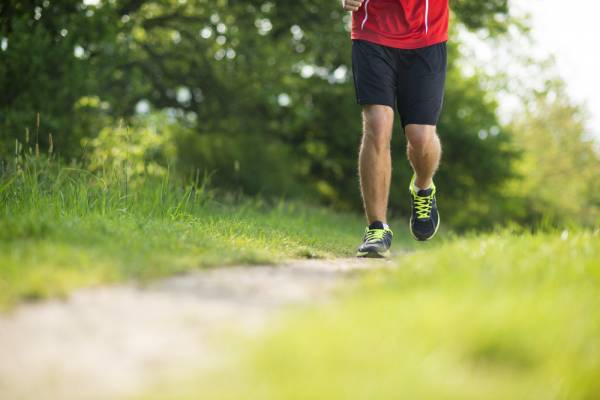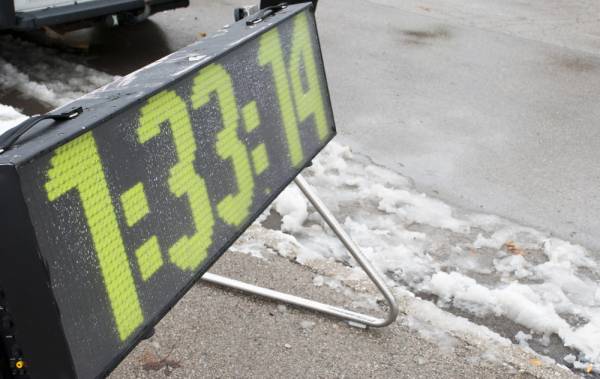GPP is a term that gets thrown around an awful lot these days. For those who don’t know the term stands for general physical preparedness. In athletic training terms, if you have good GPP, it means you have now built a strong and broad enough base of general fitness that you may start to apply the intensity in training needed for sporting success. Given most people don’t compete in anything, you can quickly see that GPP is the thing most training programs should be trying to give participants. But then, as always, we get sidetracked and start to go all nuts over single facets of our GPP plan.
Many people get confused over lifting for GPP versus lifting for performance as a competitive lifter. I think this is largely because most of the plans found on the Internet, such as the Smolov squat routine, are devised solely to increase competition lifts. And that’s one of the big things that GPP trainees never seem to get – you aren’t training for the biggest deadlift, squat, or snatch. You’re training to be a well-rounded human athlete.
A couple of years ago I had been fooled by marketing into believing that all I needed to do for my GPP was some maximal strength work and then get my conditioning via a few kettlebell swings or snatches. Now, don’t get me wrong, both of those things work, just not as well as what I had envisioned.
When I turned my hand to some endurance work, like riding 1000km in a week, or an Ironman, I didn’t do it to become the fastest endurance athlete around. I did it to find out exactly how “functional” my training really was. If your training really is functional, then you should be able to accomplish most base athletic tasks. What I discovered was that I had lost that ability. I was really, really good at standing still and lifting some weights, but a run around the block injured me. How is that a displaying a solid, all-round level of base athletic qualities?
So I started to ride, run, and swim my way to aerobic fitness. Along the way I had it graphically pointed out to me how unfit I really was when I would hang with people who came from the other end of the spectrum – the true endurance athletes. But in the same way that I had big gaps in my abilities, they did too. Many could barely do a few push ups or budge a bar with just their body weight on it.
Now, in their case, as much as I think they are setting themselves up for problems later on, I have to admit that they were in full sport-specific mode, and their abilities showed it. But mine didn’t. I was a fitness enthusiast without fitness. So I set to making sure I had the fitness – both aerobic and anaerobic – to match the strength training I had always done.
I believe many trainers kid themselves about their abilities. This gets proven graphically to me every week when we run our Training for Trainers sessions at my gym, RPT. These are closed-door sessions I run just for people who are personal trainers so they can learn while going through a session. Yet when it comes to anything beyond just lifting weights many are getting beaten by my regular clients. These are professional trainers in their twenties and thirties being beaten in physical challenges by my clients in their forties and fifties. What does that say about the effectiveness of their training versus what our clients are going through? These trainers are kidding themselves about exactly how hard they’re pushing and about how effective the work they’re doing really is.
 One of the reasons I’ve spent so much time training and traveling over the last twelve months is to spend time with people who get it – people who understand the development of GPP and base athleticism, which includes actual endurance training. You’d think this would be easy to find in the “fitness” industry, but it’s much harder to find than you might believe. I mean, what if you’re training someone for the military and he or she needs fitness? Do you WOD this person into shape, or do you need to send him or her for five to six hour pack walks? And how many people do you know who will actually say to a client that they need that many hours of work per session, versus the “six minute abs” approach?
One of the reasons I’ve spent so much time training and traveling over the last twelve months is to spend time with people who get it – people who understand the development of GPP and base athleticism, which includes actual endurance training. You’d think this would be easy to find in the “fitness” industry, but it’s much harder to find than you might believe. I mean, what if you’re training someone for the military and he or she needs fitness? Do you WOD this person into shape, or do you need to send him or her for five to six hour pack walks? And how many people do you know who will actually say to a client that they need that many hours of work per session, versus the “six minute abs” approach?
Check out this single day of training from the SEALFit preparation plan:
- Warm up: 1 mile run, plus 21-15-9 of deadlifts and handstand push-ups (bar at 90lbs for men, 65lbs for women)
- Strength: Weighted pull ups 5 x 5
- Endurance: 20min hike with 25lb pack
- Stamina: 100 pull ups, every time you come off the bar it’s 20 push-ups
And according to them, this is a “light” day to get the blood flowing. When was the last time you ran a mile, hiked two more, and still did resistance training on the same day? Or how about this day from the SAS (Special Air Service Regiment) Cadre Course preparation plan?
- Weight circuit (I won’t go into details, but it takes roughly an hour with focus on strength endurance)
- 10km run
- Later in the day walk 2 hours non-stop wearing 25kg pack
That’s how you get real fitness. The combination of strength, strength endurance and endurance all in one workout, or day. A typical strength workout for me right now goes like this:
Warm up:
Stretch for 20-30mins
Single leg deadlifts s x 5 each leg, plus get ups x 1 each side
Repeat deadlifts and get ups for three rounds
Strength:
Double kettlebell clean and press plus weighted pull-ups 5 x 5
Barbell back squat 3 x 10
Leg circuit:
Step ups x 10 each leg, sled push x 30m, single leg curls on Swiss ball x 10 each leg
Repeat for three rounds.
Anaerobic fitness:
Ski erg – 4 x 30:30
Airdyne – 4 x 30:30
Row – 4 x 30:30
Later in the day I swim anywhere from 2500m to 3000m.
 Compare that with the typical “fitness” plan handed out by most trainers that may have a few kettlebell swings or snatches for “cardio” or even a short ten minute WOD or metcon and you’ll realize those aren’t even close to delivering the same results as what I outlined. If your fitness training never exceeds these short periods of time then what will you do when you have to actually go for longer? One of the SEALs I know tells me that his missions are typically 48 hours. If his conditioning comes from ten-minute WODs, what is he supposed to rely on to keep him safe for the next 47 hours and fifty minutes?
Compare that with the typical “fitness” plan handed out by most trainers that may have a few kettlebell swings or snatches for “cardio” or even a short ten minute WOD or metcon and you’ll realize those aren’t even close to delivering the same results as what I outlined. If your fitness training never exceeds these short periods of time then what will you do when you have to actually go for longer? One of the SEALs I know tells me that his missions are typically 48 hours. If his conditioning comes from ten-minute WODs, what is he supposed to rely on to keep him safe for the next 47 hours and fifty minutes?
My mindset goes like this – if you are genuinely fit then you should be able to tackle most athletic events with little special training needed. Certainly, if you can’t complete a Spartan Super or Olympic distance triathlon without special training then you are not fit. Not even close. These events provide a fantastic way to check on ourselves and validate what we do for training, both for ourselves and our clients.
GPP needs to cover mobility and stability. It needs to cover strength and strength endurance. But it also needs to cover real endurance over much longer sessions. The Gym Jones guys separate this into sessions of less than ninety minutes and more than ninety minutes. That’s probably a pretty good place to start, so make sure that your week has at least one, if not two ninety-plus-minute sessions to enhance that necessary component of GPP.
Photos courtesy of Shutterstock.






